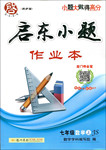题目内容
Two Chinese spacecrafts successfully completed China’s first space docking early November 3, 2011, which has taken the country a step closer to building its own space station.
Nearly two days after its launch, the unmanned spacecraft Shenzhou VIII docked with the space lab module Tiangong I more than 343 km above the earth surface. Shenzhou VIII and Tiangong I took apart after flying together for 12 days. On the 14th of November, the two spacecrafts finished the second docking. Then Shenzhou VIII parted from Tiangong I again and returned to the earth safely on the 17th. Tiangong I is still traveling around the earth in the space, waiting for the arrival of Shenzhou IX and X and so on in the near future.
That marked another great leap for China’s space program and made China the third country in the world, after the United States and Russia, to master the space docking technique (空间对接技术).
The world’s first space docking was achieved in 1966, when the manned U.S, spacecraft Gemini 8 (双子星8号) docked with an unmanned Agena Target Vehicle (阿金纳目标飞行器). Space docking is necessary to explore space beyond Earth’s orbit. “The capability increases China’s ability to act independently in space, as well as its ability to work together with others,” said Gregory Kulacki, a U.S. space scientist and senior analyst.
“With the success of its first space docking, China is now equipped with the basic technology and ability required for the construction of a space station,” said Zhou Jianping, chief designer of China’s manned space program.” The country is on its way to building a permanent manned space station around 2020.”
1.What did the success of the first space docking mean to China?
A. China has caught up with the United States in the space exploration field.
B. China took a step closer to building its own space station.
C. China became the first country to master the space docking technique.
D. China has the ability to build a permanent manned space station right now.
2.What does the underlined word “That” in the third paragraph refer to?
A. Shenzhou VIII.
B. Tiangong I
C. The Space Station
D. The success of China’s first space docking
3.What can we learn from the passage?
A. Tiangong I will fly in the space for 12 days.
B. The first space docking of the world was achieved in 1966, by Russians.
C. Without space docking technique people can’t explore space beyond Earth’s orbit.
D. The U.S.A helped China achieve the first space docking.
4.What’s the best title of this passage?
A. The first space docking of China.
B. The history of space docking.
C. The first space docking of the world.
D. The space docking technique
1.B
2.D
3.C
4.A
【解析】
1.根据文章内容第一段,可知答案为B
2.根据上文的内容可知答案为D
3.根据文章内容可知答案为C
4.根据文章内容大意可知答案为A

 黄冈经典趣味课堂系列答案
黄冈经典趣味课堂系列答案 启东小题作业本系列答案
启东小题作业本系列答案| 根据短文内容,选择正确答案。 |
| Mr Green is from England. He and his wife (妻子) are teachers. They teach English in Beijing. They have a boy and a girl. They are Jack and Mary. Jack is a student, but Mary is not. She is only four. They have two bikes. One is big, and the other is small. The big one is for Jack. The small one is for Mary. On Sundays, sometimes they are at home, sometimes they go to the park. The Greens like China. They have a lot of Chinese friends. |
| 1. Where are the Greens now? They are in _____. |
| A. China B. America C. England D. Japan |
| 2. What do Mr and Mrs Green do? They _____. |
| A. study Chinese B. teach English C. look after Jack and Mary D. go to the park |
| 3. What do Jack and Mary have? They have_____. |
| A. cars B. watches C. clocks D. bikes |
| 4. On Sundays, they are sometimes _____. |
| A. at school B. in the classroom C. at home D. on the bike |
| 5. Mr and Mrs Green _____. |
| A. have many Japanese friends B. like China very much C. look the same D. don't know Chines |